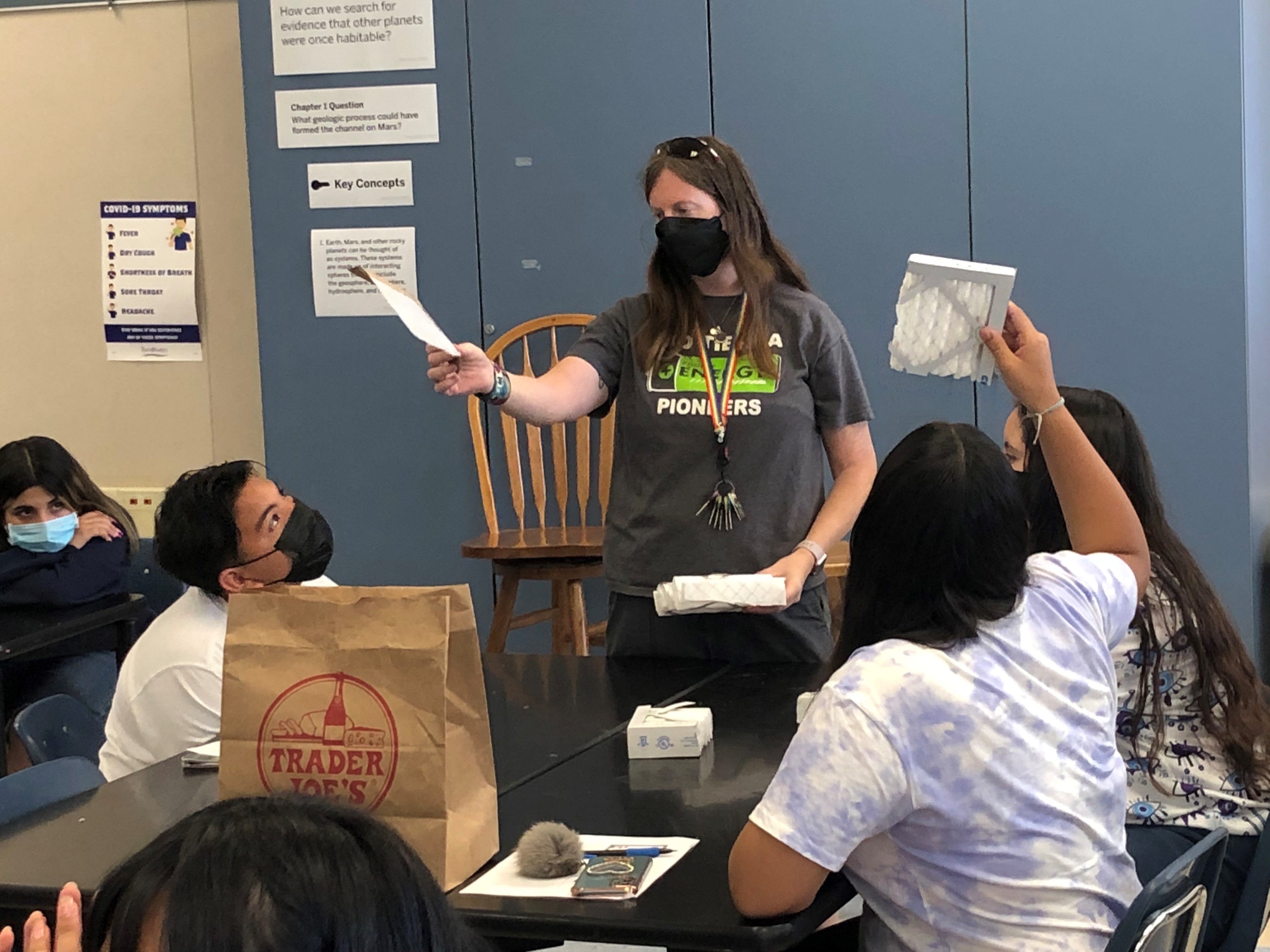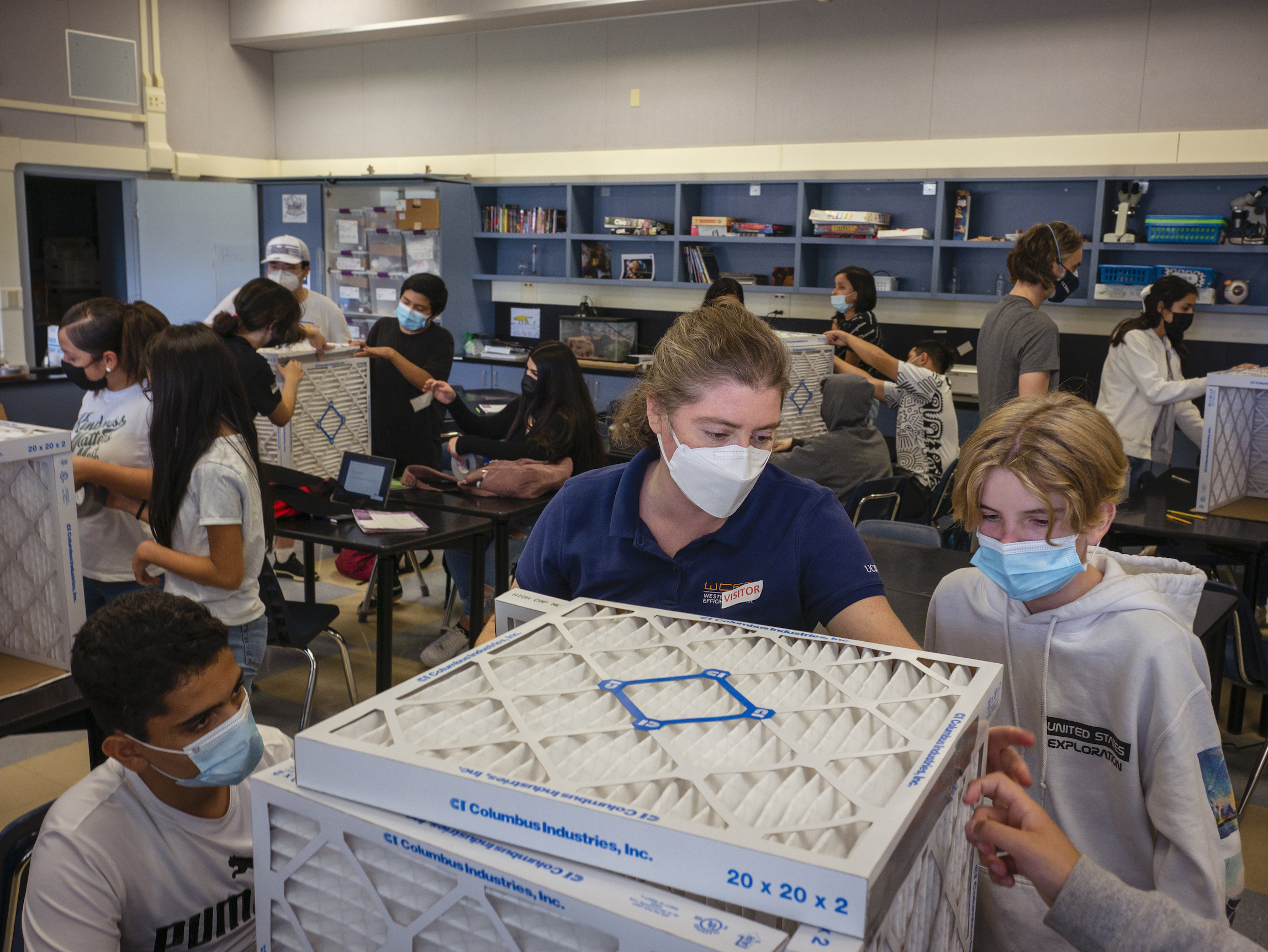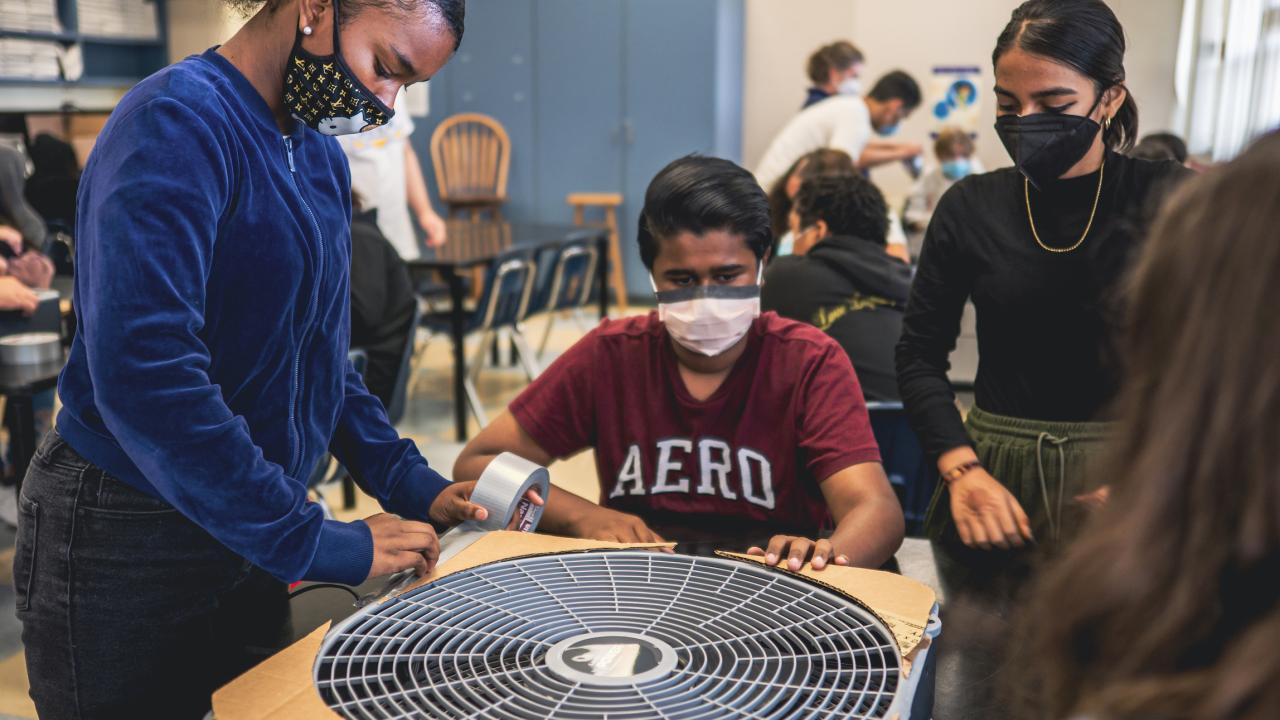Schools are facing many challenges this fall, including minimizing risks to students and staff from COVID-19 and wildfire smoke exposure. Air purifiers are one tool that can help.
Researchers from the UC Davis Energy and Efficiency Institute (EEI) partnered with science teachers at Rio Tierra Junior High School in Sacramento to teach a two-day lesson on air quality and build 30 portable air cleaners with approximately 150 8th grade students. The portable air cleaners will be distributed to every classroom on campus.
Knowledge to action
“It is really important to empower students and help them understand indoor and outdoor pollution sources, and how to measure and improve indoor air quality,” explained UC Davis researcher and project lead Theresa Pistochini.
The lesson culminated with groups of 4-5 students constructing do-it-yourself portable air cleaners using a Corsi-Rosenthal cube design, which uses a box fan and four filters with a MERV 13 rating.
The materials for each air cleaner cost $75. Each air cleaner is expected to provide about the same amount of air cleaning effectiveness as small, commercially available portable air cleaners that cost about $200.
Science teachers Amber Mitchell and Kathryn Graf planned the visit with UC Davis researchers Pistochini and Robert McMurry.
“I love having outside speakers come in," Mitchell said. "Air quality is such a relevant topic that we are able to teach the kids about. We are always trying to relate science to current events and student’s lives. There’s not much more relatable right now than making air purifiers to help our school.”

Importance of air quality
“Air quality is such an important topic that historically has not received much attention," Pistochini said. "I hope that our outreach to students will encourage them to think about the air they breathe, and consider engineering and environmental science as a career path."
While investments in permanent ventilation and filtration systems are the best way to improve indoor air quality long-term, portable air cleaners are a quick way to achieve some immediate benefits, Pistochini said.
Principal Adam Sinor supported the project and visited the classrooms to see the air cleaner construction in action.
“With the wildfires and COVID-19, and the way COVID is spread through aerosols, it’s a way kids can take action to make their internal environment better and learn science and engineering at the same time,” Sinor said.

Project support
The project was funded by the UC Davis Sustainable Campus, Sustainable Cities initiative, which received funding from the Sacramento Municipal Utility District Sustainable Community Program. The initiative aims to engage K-12 students in energy-oriented STEM education, using experiential learning as well as citizen and community science to empower students to measure, analyze, understand, and manage their environment.
Media Resources
Ali Loge is communications and outreach director for the UC Davis Energy and Efficiency Institute.
Other resources:
- For questions about the project, contact Theresa Pistochini, engineering manager at the UC Davis Western Cooling Efficiency Center, 916-612-6418, tepistochini@ucdavis.edu.
- DIY Portable Air Cleaner Testing information from UC Davis Western Cooling Effiency Center
- “Improving Indoor Air Quality in California Schools” https://wcec.ucdavis.edu/improving-indoor-air-quality-in-california-schools/
- Photos available for download.
